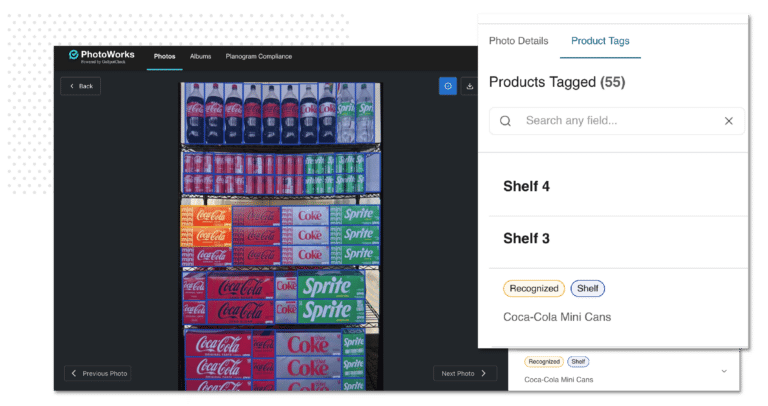Each year, more than 2.9 million US workers suffer injuries at work. The National Safety Council estimates that every injury causes nine days of missed work and costs $42,300 in lost productivity, insurance claims, and medical bills.
Unfortunately, near-misses, injuries, and fatalities are going to happen even in low-risk industries. The harsh truth is that there is no “one-size-fits-all” solution to the problem. Strategies that claim lowering the frequency of minor incidents leads to a reduction in serious accidents, such as the thoroughly debunked “Safety Pyramid,” don’t really work. Only accurate, practical, and actionable data can increase the power of a company’s safety initiatives.
If a decision-maker wants to make a real difference in their organization’s occupational safety index, the first step is to distance themselves from inflexible mobile apps, spreadsheets, and paper forms. Solutions need to be as agile and connected as possible to stay ahead of ongoing issues.
We’ve selected three of the biggest ways mobile data collection can help organizations improve long-term health and safety. Not every digital solution will provide the same benefits as using Form.com, so think of these three points as a rubric you can use to measure your own system.
1. More reliable and flexible safety audits
Collecting and communicating safety information with inflexible apps or spreadsheets becomes confusing quickly. While many apps boast out-of-the-box functionality, many force their clients to filter any change (no matter how small) through their support department. Meanwhile, although spreadsheet programs are freely available and familiar to most, advanced processes require technical experts to ensure formulas and interactions occur without issue.
Mobile devices equipped with a flexible, offline data solution are the eyes and ears of safety leaders. Modern smartphones and tablets offer essential features that clarify audits, like HD cameras, location tracking, and hard drives capable of storing relevant reference data. With the right solution, even inexperienced auditors can document, correct, and prevent issues in the field using step-by-step interfaces that keep them on track.
Mobile apps can prepopulate data fields by drawing from offline data models and previous input. With custom branching logic, you can set up conditions that guide users through their tasks seamlessly, skipping irrelevant questions and prompting specific user actions based on red-flag responses. The typical stack of paper for a company-wide safety audit can be reduced to a seamless digital flow of properly contextualized questions and on-the-spot corrections.
Most employees are already familiar with mobile devices and probably use their own multiple times a day. With a BYOD (bring your own device) initiative, you can offset the cost of new company-owned devices, and put smart, guided auditing tools at your workers’ fingertips while using their own devices.
2. Better oversight and task management
Digital data collection has already been proven to be as reliable as double entry. Unfortunately, not every solution will ensure workflows follow the right path every time. Most of the “freemium,” off-the-shelf solutions you’ll find provide little more than a system of record with standard management options.
The right mobile data solution will offer flexible task management tools directly integrated with your data collection tools. This ensures that all the safety jobs in your organization are centralized for easy management and automation. Instead of dividing the various parts of a single, such as an inspection that leads to a work order, all the different steps in a safety process can “talk” to one another through workflows that operate behind the scenes.
For example, with some mobile apps, you may be able to send an alert about a red-flag safety issue from an inspection, but starting up a separate task to repair a defective valve is in another system. The right mobile solution will allow you to do both at the same time—often without any extra manual effort.
Although cloud-enabled software is swiftly becoming the norm, it’s important to remember that many companies still carry out vital operations beyond the tether of WiFi. Mobile data solutions featuring offline-first functionality give field workers the flexibility and range to handle safety duties without a connection.
With Form.com’s offline synchronization, workers still have access to cached versions of their tasks, forms, calculations, and data models no matter where they go. When they connect again, managers will get updates on their activities, keeping them in the loop even when a connection forces a field auditor to “go dark.”
3. Improved trend tracking and analysis
Mobile technology not only speeds up the rate of corrections and task management but also provides insights to drive long-term improvement. Aggregating safety data from multiple sources within a cohesive system allows you to dig deeper into trends and identify which assets, processes, and behaviors should be prioritized first.
Mobile data solutions with analysis tools also encourage a data-driven safety culture throughout an organization. Merely listing the number of accidents per year can’t provide a meaningful illustration of the issues. With features like Form.com’s BI Dashboards and custom reporting, data can be structured as charts, graphs, and more. Elements like these not only provide durable frames of reference for strategic discussion but can also be used to offer insights to your workforce.
Having a strong command of your data can pay dividends. In a 2016 Dodge Data & Analytics report, it was revealed that 76% of construction companies actively promoting safety culture among their workforce were contracted for more jobs than those that did not. Meanwhile, OSHA reports that companies actively enforcing health and safety management systems reduced the cost of accidents over 40 percent.
If your current health and safety solution is only used to fill a binder for the quarterly report, consider putting that information into action instead. The control and flexibility offered by a customized data collection solution can help you generate practical safety initiatives and long-term improvements.
Ready to learn more about how Form.com can help improve your organization’s health and safety audits?







